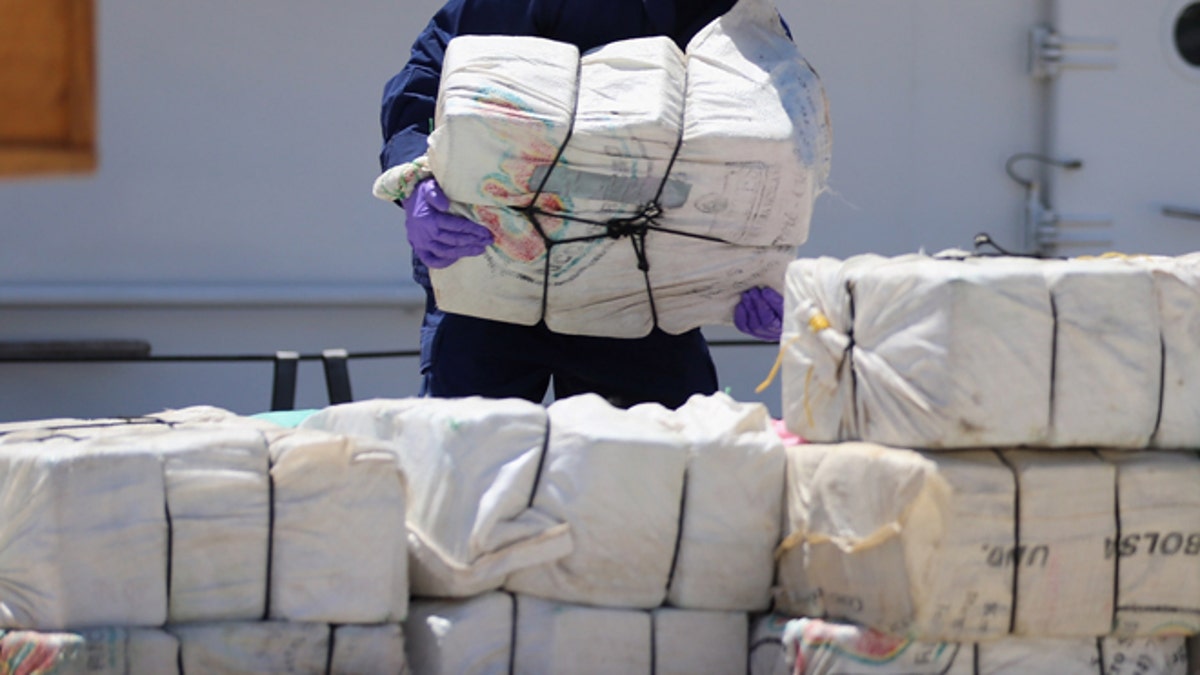
MIAMI, FL - APRIL 26: A crew member from the Coast Guard Cutter Bernard C. Webber piles up some of the 2,200 pounds of cocaine after it was seized during Operation Martillo, worth an estimated $27 million on April 26, 2013 in Miami, Florida. The cocaine was found while the crew was conducting a law enforcement patrol, where they located a 68-foot fishing vessel in the western Caribbean Sea, April 18, 2013. The crew of the Cutter Gallatin boarded the vessel, located 2,200 pounds of cocaine, and detained three suspected smugglers. (Photo by Joe Raedle/Getty Images) (2013 Getty Images)
The U.S. State Department's newest drug report shows that the vast majority of cocaine coming into the country makes its way through Central America and Mexico – apparently contradicting previous reports that the drug trade has been shifting its trafficking routes from isthmus to the Caribbean.
The 2016 International Narcotics Control Strategy Report (INCSR) found that around 90 percent of cocaine coming to the U.S. during the first half of 2015 made its way through the Mexico and Central America corridor. That number is up from 86 percent in 2014 and 80 percent in 2010.
The report listed Belize, Costa Rica, the Dominican Republic, El Salvador, Guatemala, Haiti, Honduras, Jamaica, Mexico, Nicaragua and Panama as major drug producing or drug trafficking countries.
Both Guatemala and El Salvador were singled out as hot zones for drug trafficking with the latter seeing a doubling of cocaine seized in 2015 over 2014. There are "hundreds of metric tons ... smuggled through Guatemala" every year, with 2015 drug seizure statistics level with those from 2014, the report found.
In neighboring Honduras, which has been one of the main focus points of U.S. anti-drug efforts in the region, saw a 40 percent decrease in drugs traversing the country, but it still struggles to combat trafficking along its Caribbean coast.
“The region suits narcotics trafficking due to its remoteness, limited infrastructure, lack of government presence and weak law enforcement institutions,” the State Department report noted. “Drug transshipment to points north from the Caribbean coast is facilitated by maritime and riverine traffic, subsequent flights north and overland movement.”
The increase in trafficking in Central America appears to fly in the face of State Department predictions that stricter border enforcement and drug interdiction efforts in Central America and Mexico were leading to the reemergence of the Caribbean as the main thoroughfare for traffickers.
Of the countries in the Caribbean, the Dominican Republic was singled out in the report as “an important transit country for illicit drugs.”
“The U.S. government estimates that approximately six percent of the cocaine transiting to those markets transships through the Dominican Republic,” the report read. “The country is experiencing an increase in narcotics-related violence, partially attributable to the practice of drug-trafficking organizations paying local partners in narcotics, which leads to the development of local drug gangs that engage in violent turf battles to control domestic drug distribution."
